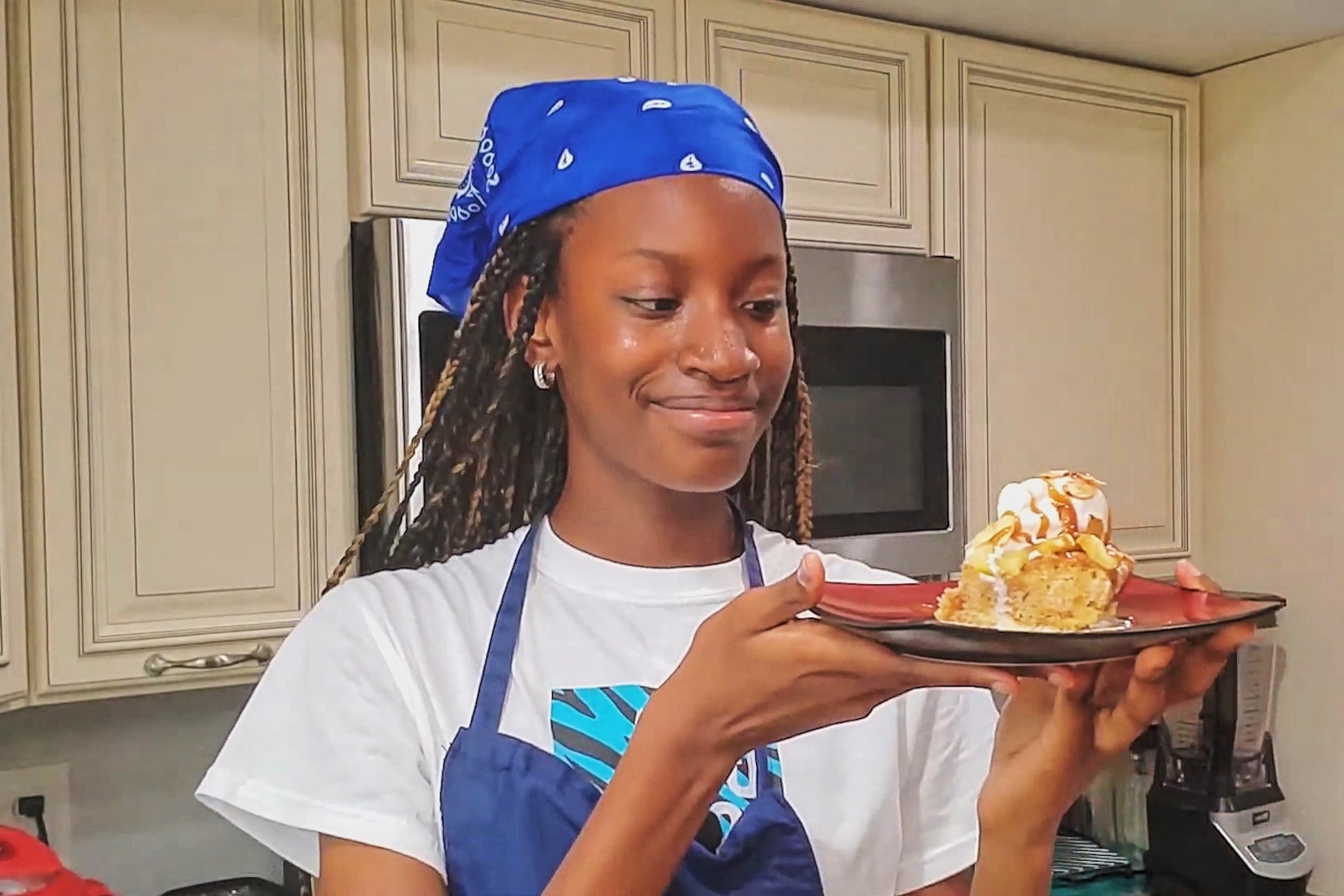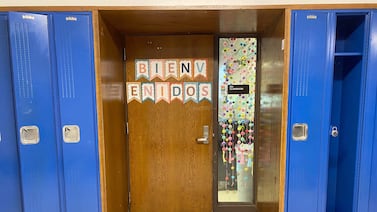Standing in her Brooklyn kitchen, knife in hand, 16-year-old María González stared at her laptop, trying to learn how to properly julienne and brunoise a potato. Under normal circumstances, this would be challenging, but during a pandemic, it’s even harder.
“All you saw were blurry pixels,” said González, a senior at Food and Finance High School, who opted this fall to learn from her Cypress Hills home instead of the school’s Hell’s Kitchen building. “I was like, am I doing this correctly?”
Like all New York City public schools, Food and Finance has had to adjust to remote learning and help students who need working computers and Wi-Fi. But as the city’s only public culinary high school, it has faced additional hurdles. Not only is it difficult to virtually teach culinary arts — a hands-on subject that requires access to fresh food ingredients and pricey kitchen equipment — the school is also grappling with how to maintain its very mission. The school’s aim, to prepare students for food-related careers, has been upended as the pandemic has ravaged the industry. It’s forced educators to quickly pivot, finding innovative ways to keep students engaged and help them explore related career paths, such as food tech and media on top of traditional kitchen skills.
More than 80% of the students at Food and Finance qualify for free or reduced-price lunch, and many families were hit hard by the economic collapse last spring. González’s dad, who is also a chef, initially lost his job when the restaurant industry shut down in March. The Food Education Fund, a nonprofit that partners with the school to provide some of its programs and secure student internships, responded quickly, sending 500,000 meals to families over the past eight months. They’ve also delivered ingredients to students or arranged pick-ups from nearby stores or restaurants so the teens can keep up with their coursework — and keep their families fed. González said her family relied on that food until her dad got a job again.
“I’m really scared of the future,” González said. “I’m scared that many restaurants are closed, and I’m scared that they might fire me [when I get a job] because there’s not enough money… or there’s a lot of people that are getting sick.”
Employment in New York City’s restaurant industry is dramatically down. By August, it was only 55% of its pre-pandemic level in February, according to a recent report from the state comptroller.
Chef Geoffrey Tulloch, who teaches global cuisine to juniors, said he and his students started talking about the pandemic’s impact on the restaurant and food industries last spring. Besides addressing new pandemic-related stressors, Tulloch felt he also needed to be honest with them about the longstanding challenges of racism in the industry. Nearly all students at Food and Finance are Black and Latino.
“We have to protect them,” Tulloch said, “but at the same time not hide the reality because I think hiding the reality of what could happen is sort of setting them up for failure.”
Tulloch is amazed by how his students have adapted to the challenges of this year. The school has adapted, too.
Every year Food and Finance organizes an annual showcase in the spring, which usually involves students cooking for guests. They had to scrap the event last year, and instead partnered with Cherry Bombe magazine to create their own publication called Pass the Spatula, highlighting well-known chefs of color, including some of the school’s own alumni. The theme was in the works well before the pandemic and protests, but it took on new meaning in the spring. This year’s showcase is moving forward in some shape or form and plans to focus on food justice and insecurity.
Senior Chayil Hyland, 17, one of the creative directors of Pass the Spatula, helped design the cover and some of the magazine’s art work. Hyland has dreamed of being a chef since she was a kid after watching the Disney movie Ratatouille. Working on the magazine showed her another possible career path. This semester, she’s interning with Cherry Bombe.
“I went to the school saying I want to be a chef. I want to own my own restaurant or bakery,” said Hyland, who lives in Queens. “But now I have a wider variety of what I want to do, including food media.”
With the Food Education Fund, González and Hyland have also participated in optional cooking demos on Instagram Live, where they teach professional chefs how to make a recipe of their choosing. For her video, González made sopa de calabaza, and Hyland, whose mother is from Guyana, made Guyanese chicken chow mein.
Like González, Hyland also chose to learn from home this year instead of going into the school building. Only one of the school’s culinary instructors out of four is teaching in-person, so while some students are going to the school for cooking classes, most are learning from their homes. When a culinary class requires students to cook specific things, the fund delivers the proper ingredients. Other times, they focus on flexibility.
“Our approach has been, rather than saying cook this recipe with these ingredients, more of show us what you want to make, so they can use whatever equipment they have or whatever access they have to make something that’s personal to them,” said Eliza Loehr, the executive director of the Food Education Fund.
As González and Hyland prepare to graduate in the spring, they said they are both nervous and optimistic about the future. González hopes to land an internship soon at a restaurant. Many restaurants that partnered with the fund for internships dropped out after the pandemic hit, but some have opened up again. And Hyland is waiting to see if she got accepted into the Culinary Institute of America. No matter what happens, she sees this year as one of opportunity rather than obstacles.
“I think that food will always be there, and the food industry will always be there,” Hyland said. “It would just renovate and get better, and it’s up to us to renovate it. It’s up to us to formulate what we want the future to look like with food.”








